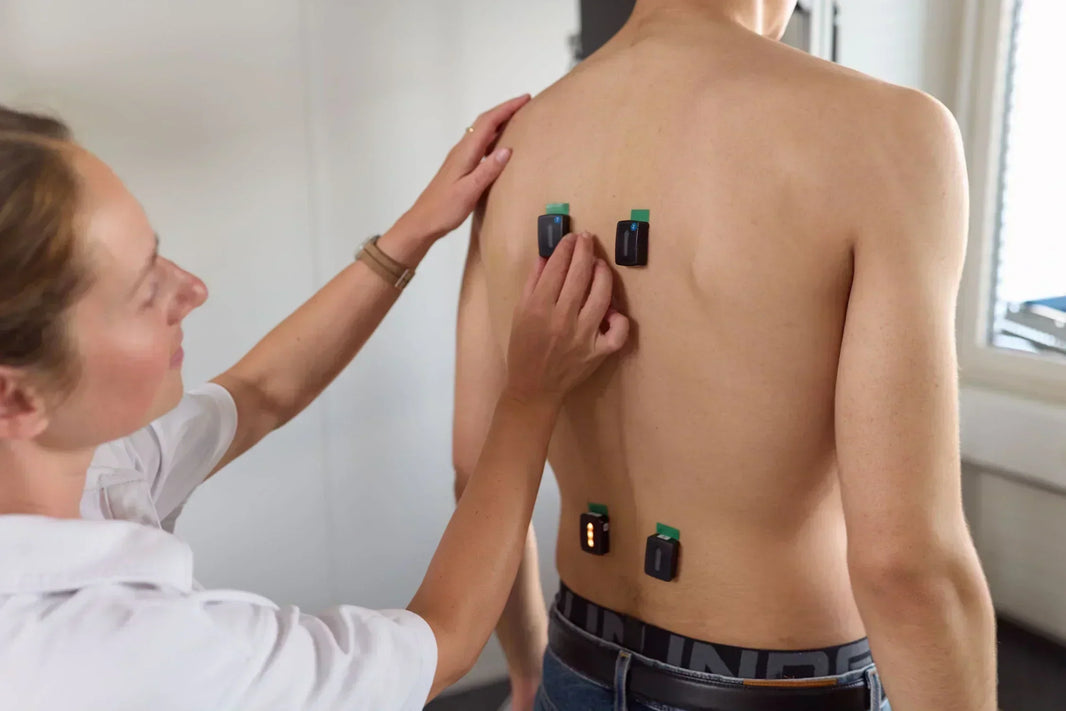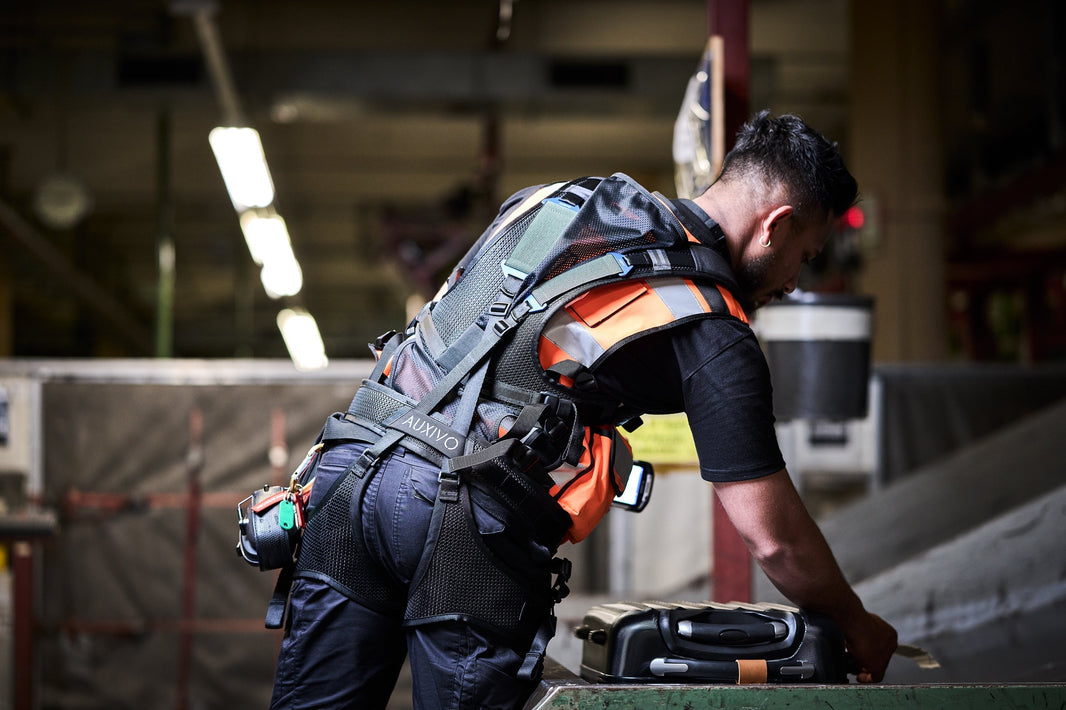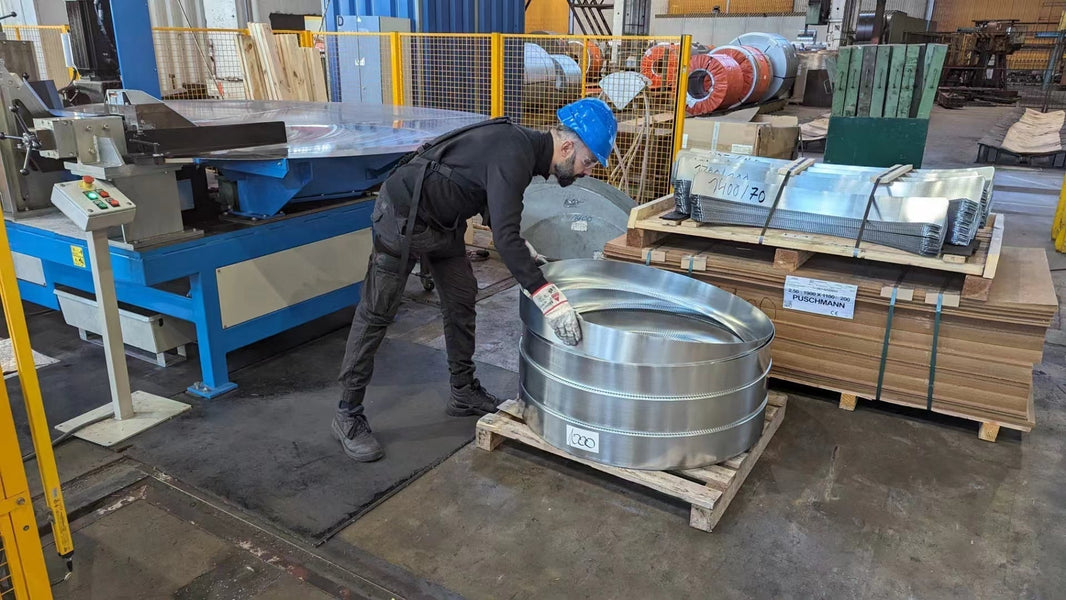If you know Auxivo, they’re no strangers to exoskeleton research, testing, and fine-tuning their technology. Every now and then, a simple observation leads to a deeper discovery.
Although exoskeleton technology has been around for several years, long-term studies are hard to find. The latest study on Axiovo's LiftSuit back support exoskeleton compared first-time users to long-term users and learned that the long-term users' experience with the exoskeleton fundamentally changed how the body used it.

From Observation to Investigation
In the development process, Auxivo regularly uses electromyography (EMG) to measure how much muscle activity is reduced when using an exoskeleton. Time and again, their internal testers, who have used the LiftSuit extensively, showed more pronounced benefits than first-timers. Could it simply be that they knew how to wear and activate it correctly? Or was there something deeper at play, perhaps a kind of neural or muscular adaptation?
Does the human body learn to work with an exoskeleton over time, much like learning to ride a bike, swing a golf club, or play an instrument?

A Scientific Approach: Testing the Learning Curve
To test the theory, Auxivo partnered with ETH Zürich and launched a structured study. They recruited 21 participants who had never worn an exoskeleton of any kind. Each participant performed 1,000 squat lifts over the course of four sessions, all while wearing the LiftSuit.
To remove fitting inconsistencies as a variable, certified trainers ensured the exoskeleton was always properly worn and activated. The sessions were spaced at least 48 hours apart to allow for “motor learning”, which is the neuroscience-backed process where the brain refines and stabilizes new movement patterns over time, especially during sleep and rest.
Before and after the full training period, EMG was used to measure each participant’s back muscle activity.

What Was Found
While improvements were suspected, the findings exceeded predictions.
-
In static forward-leaning tasks, back muscle activity reduction doubled, from ~20% to nearly 40%.
-
During dynamic squat lifts:
-
Upper back relief increased from 23% to 29%
-
Lower back relief increased from 10% to 21%
-
In other words, repeated use of the exoskeleton didn’t just feel better, it actually delivered more support as users became more familiar with it.
Why Familiarization Matters
This research confirms a key takeaway for anyone implementing exoskeletons in the workplace: training and familiarization are not optional; they’re essential.
Initial impressions can be misleading. On day one, an exoskeleton may feel awkward or ineffective. But with repeated use, users begin to move more naturally with the device, and its true benefits emerge. With proper time and use, users often stop even noticing the exoskeleton; yet they receive significantly more support.
For employers and safety managers, this means that allowing workers time to adapt can lead to better outcomes, fewer injuries, and a more realistic understanding of the technology’s impact.
Implications for Research and Development
For the broader exoskeleton research community, Auxivo's findings also raise important methodological questions. Many studies still rely on first-time user data, potentially underestimating the real-world benefits of these devices. Familiarization should be factored into both product evaluation and design processes.

Sharing Results with the World
We're proud to share this work with the global exoskeleton community. Auxivo's study has been presented at the 30th Congress of the European Society of Biomechanics in Zurich, and will also be featured at WearRAcon Europe 2025 in Düsseldorf.
Detailed abstracts, including methodology and data, will be published as part of the conference proceedings. We hope the research contributes to a deeper understanding of how exoskeletons, and the humans who wear them, evolve together over time.







